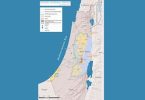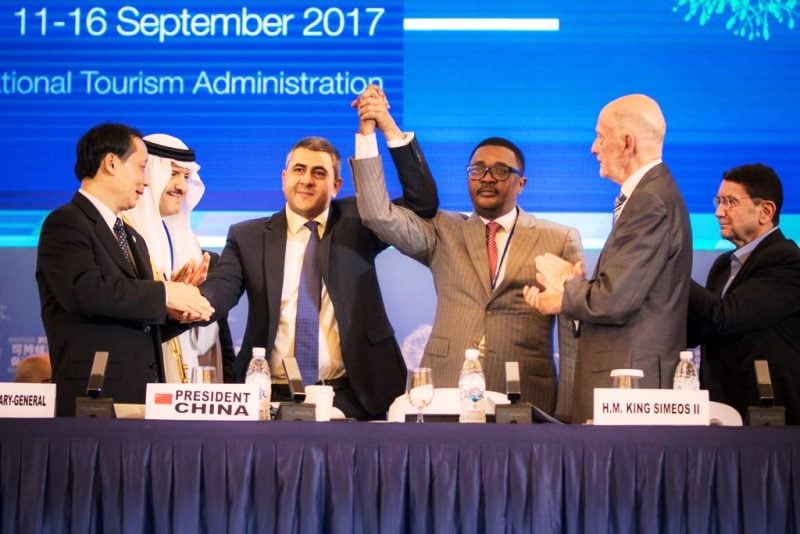East Timor (Timor Leste) gained independence from Indonesia in 2002 after a violent struggle, which led to the cutting of Timor Island into two distinctive parts: Timor Barat (West Timor) with Kupang as its capital is still today part of Indonesia, while East Timor became Southeast Asia’s newest state. However, almost a decade after achieving independence, tourism remains in its infancy in this country populated with a million inhabitants, as many tourists still continue to ignore its existence. Many factors explain Timor Leste’s struggle to reach a wider audience. Its first years of independence were marked with sporadic but brutal violence, which tarnished the image of the country. Stability exists now, however, the country’s external image still remains negative in some ways.
Promotion is Timor Leste’s second problem. The Tourism Directorate of Timor Leste was only set up in 2007 within the Ministry of Commerce and Industry and seems to struggle to get sufficient funding to be more active worldwide. “We first got help from Portugal and Macau to build up our tourism website and publish some tourism materials. Portugal helps us also with tourism and hospitality training for young Timorese. Our tourism budget is, however, on the increase from US$49,000 in 2001 to approximately US$4 million,” said Aquilino Santos Caeiro, head of promotion at Timor Leste Tourism. According to Mr. Santos Caeiro, the budget increase serves to bring more international visibility to the country. The US$4 million in the 2010 tourism budget includes Timor Leste’s participation at the Shanghai International Expo and the organization of the Tour de Timor, as well as international diving competitions.
Surprisingly, Timor Leste looks rather isolated in its geographical zone of location in Southeast Asia. After gaining independence, Timor Leste hoped to integrate rapidly with ASEAN (Association of South East Asian Nations). Originally targeted for 2012, the process of membership has, however, been delayed. Like in many other domains, ASEAN’s rather weak political voice has been unable to speak out commonly about Timor Leste’s possible integration. As it stands now, the country might finally join in 2015. There is also very limited cooperation in the tourism field with its Indonesian neighbor, despite normalized diplomatic relations. “It is, however, easy to cross borders between both countries with [a] visa immediately delivered at Timor Leste’s immigration points,” added Aquilino Santos Caeiro.
The office continues to remain highly dependant on external support in order to be present at international fairs: Timor’s presence at PATA Travel Mart occurred because of PATA’s help and also due to the show taking place this year in Macau, one of Timor’s most active sources of funding in tourism. Timor Leste was also present at the Lisbon Tourism Fair BTL. Other countries supporting tourism development in the country are Singapore and Australia. Australia has been keen to help in the development of diving activities, as a high number of Australian divers consider the country to be an excellent diving spot. Australian tourists represent Timor Leste’s number one incoming market, representing over 25 percent of all international arrivals at Dili International Airport. Dili is linked daily to Darwin in Australia.
Singapore is getting increasingly active in tourism investments. “A Singapore company signed in 2008 an agreement with the government to develop Timor Leste’s first five-star resort. Silk Air is also involved into the development of our airline, Air Timor,” told Mr. Santos Caeiro. Air connections are, in fact, Timor’s biggest headache, as access is crucial to bring more tourists into the country. Besides Darwin, there are only two weekly flights to Singapore (three from January 2011) and a daily flight to Bali by Merpati. Air Timor is due to become the country’s national carrier flying both international and domestic routes. It has plans to start flights to Kuala Lumpur. Surprisingly, beside the Bali air connection, they are no flights to other parts of Indonesia, neither to Jakarta or Surabaya – which could act as international gateways – or even to Kupang in West Timor. Dili airport needs to be upgraded to receive larger aircraft. The 1,850 m runway can only receive aircraft such as the Boeing 737 and Airbus A320 and cannot allow landings in case of low visibility.
Despite all these obstacles, Timor Leste’s tourism is on the increase: total foreign arrivals with a tourist visa have grown from 11,787 in 2006 to 26,714 in 2009, up by 126.6 percent. During the same period, total foreign arrivals at Dili Airport grew from 13,655 to 44,131, up by 233.2 percent. Besides Australia with 11,207 arrivals, other important source markets arriving at Dili Airport were Indonesians (5,443 arrivals), Portuguese (4,501 arrivals), Chinese (1,991), and Malaysians (1,956). Timor Leste’s nascent tourism industry has 16 hotels with 807 rooms, which recorded 97,000 overnights in 2009. The average room rate in 2009 stood at US$68. The integration of Timor Leste into ASEAN (planned in 2012/2013) would then probably have the most significant impact on the country’s tourism evolution.
(eTN): Air connections and international presence are crucial to Timor Leste tourism | re-post license | post content






















